
There's no one who doesn't know about McDonald's, KFC and similar food outlets. Some may be aware that what they eat there is known as junk food and why, and have avoided eating their food because of it. For others who doesn't or who are already aware but either doesn't know what it means or chose to ignore it, it may be instructive to read the following article. They may be shocked, but such information has already been widespread in the internet. This is not meant to raise alarm, just that you should be aware of what you eat the next time you pay a visit to these outlets. After all, in an announcement last month, McDonald's has already confirmed it has been using the ingredients mentioned in the article and has stopped using them in the production of its hamburgers.
8 CREEPY MYSTERY INGREDIENTS IN FAST FOOD
By Melissa Breyer, Mother Nature Network, 12 February 2012.
Among all of the apocryphal tales of disgusting items found in fast food, some of the truths (crushed beetles? duck feathers?) may be more disturbing than the myths.
8 CREEPY MYSTERY INGREDIENTS IN FAST FOOD
By Melissa Breyer, Mother Nature Network, 12 February 2012.
Among all of the apocryphal tales of disgusting items found in fast food, some of the truths (crushed beetles? duck feathers?) may be more disturbing than the myths.
Would you like a cow eyeball with your burger?
One of the more-enduring urban legends about McDonald’s is that their hamburgers contain cow eyeballs. While this has not proven to be the case, their Baked Hot Apple Pie does contain duck feathers, or at least an ingredient commonly derived from such. Truth can be just as strange as fiction.
How have duck feathers become a viable ingredient in apple pie? Welcome to the world of food additives. People have been adding flavours, spices, natural preservatives and ripening agents to food since antiquity. But as the popularity of highly processed food has risen dramatically since the 1950s, so has the astounding array of bizarre chemical additives used in food manufacturing. Fast-food recipes seem to be born more from the laboratory than from farm or field.
And although the powers that be deem these food-additive chemicals safe, the science fiction of it all is a bit unsettling. How do we come up with these things? Here are some of the wackiest of the bunch.
1. Duck feathers and human hair (L-cysteine)
You thought duck feathers sounded bad? How about human hair? These are the two most-common sources for l-cysteine, an amino acid used to condition dough for increased pliability, which facilitates better machine processing. CNN reported that most human-derived l-cysteine comes from Chinese women who help support their families by selling their locks to small chemical-processing plants.
L-Cysteine from human hair and duck feathers. Source here.
Although originally the primary source for l-cysteine was human hair, many manufacturers seem to have moved away from hair-derived l-cysteine and on to the more-palatable duck feathers. According to Jeanne Yacoubou, MS, research editor for The Vegetarian Resource Group, 80 percent of l-cysteine is now derived from feathers. During her research, McDonald’s told Yacoubou that the l-cysteine used in its Baked Hot Apple Pie, as well as its Wheat Roll and Warm Cinnamon Roll, was of the duck-feather variety. Many other fast-food joints rely on l-cysteine in bakery products as well.
And not to be sensationalist here, the resultant additive is far-removed from its original source — but still. It may be disturbing to many, and importantly, may fly in the face of ethical or religious dietary restrictions.
2. Sand (silicon dioxide)
Avoiding sand in your sandwich at the beach is obvious, avoiding sand in your restaurant-purchased meal may not be so apparent.
Sand is hidden in Wendy’s chilli as silicon dioxide. Apparently they use sand as an “anti-caking agent,”
perhaps to make sure the chilli can last for days and days over a heater. Source here.
perhaps to make sure the chilli can last for days and days over a heater. Source here.
Silicon dioxide, also known as silica (also known as sand!), is used to make glass, optical fibers, ceramics, and cement. Oh, and chilli. Used as an anti-caking agent, it is often added to processed beef and chicken to prevent clumping, and is listed in the ingredient panels for chilli from both Wendy’s and Taco Bell. Most experts suggest that it isn’t harmful for consumption, but just know that the ingredient keeping that chilli meat nice and non-caking is the also the primary component of diatomceous earth, commonly used as a pesticide.
3. Wood (cellulose)
Wood pulp (cellulose) that you eat with these food. Cellulose (the white powder shown above)
is processed from the word pulp into a food extender. Source here.
is processed from the word pulp into a food extender. Source here.
Processed wood pulp, known as cellulose, is used in everything from cheese to salad dressing, from muffins to strawberry syrup. Food processors use it to thicken and stabilize foods, replace fat and boost fiber content — as well as to minimize reliance on more costly ingredients like oil or flour. Powdered cellulose is produced by cooking virgin wood pulp in chemicals to separate the cellulose, and then purified. Modified versions require extra processing, such as exposure to acid in order to further break down the fiber.
Ironically, with the increase in nutritional awareness has come an increase in the use of cellulose — with the addition of wood pulp, products can boast of less fat and more fiber. Just don’t mind the wood.
McDonalds, Taco Bell, KFC, Sonic, Pizza Hut, Wendy’s, Arby’s, Jack in the Box, and many others include cellulose in their repertoire.
4. Silly Putty plastic (dimethylpolysiloxane)
Eight-syllable ingredients make sense for Silly Putty, but French fries? Sure enough, dimethylpolysiloxane, a form of silicone used in cosmetics and Silly Putty, is also found in many a fast-food fried thing. It is the secret ingredient that keeps fryer oil from foaming.
McDonald’s Happy Meal with dimethylpolysiloxane (a form of silicone) to keep fryer oil from
foaming. It also help resist decomposition for a period of time. Source here.
foaming. It also help resist decomposition for a period of time. Source here.
McDonald’s Filet-O-Fish and French fries have it, as do Wendy’s Natural-Cut Fries With Sea Salt. In fact, most fast-food items that bathe in a deep-fat fryer are imbued with a hint of dimethylpolysiloxane. Should you be concerned? The World Health Organization found no adverse health effects associated with dimethylpolysiloxane, but come on — what’s wrong with using potatoes, oil, and salt for fries?
5. Petroleum-derived preservatives (TBHQ)
Tertiary butylhydroquinone (TBHQ) is made from compounds derived from petroleum and finds a home in cosmetic and skincare products, varnish, lacquers and resins — and processed food. McDonald’s, for example, uses it in 18 products ranging from their Fruit and Walnut Salad to Griddle Cakes to McNuggets.
Tertiary butylhydroquinone is a preservative to prevent rancidity (staleness) in oils, fats, and
foods (like McNuggets). Source here.
foods (like McNuggets). Source here.
TBHQ was finally approved after many years of pressure from food manufacturers, though with approval, the FDA mandated that the chemical must not exceed 0.02 percent of a food’s oil and fat content. Why would there be a limit? Because five grams would be lethal, while one gram can cause nausea, vomiting, delirium, a sense of suffocation and collapse. (Although you would have to eat more than 11 pounds of McNuggets to reach that level. And if you're willing to eat 11 pounds of McNuggets in one sitting, well...)
6. Soil fertilizer (ammonium sulfate)
Ammonium sulfate is sold by chemical companies to food manufacturers as “yeast food for bread,” and many fast-food companies list the ingredient in their bakery products.
But that’s just its night job; when ammonium sulfate is not moonlighting as a food additive, it performs its main task: as a fertilizer for alkaline soils. Ammonium sulfate also does duty as an agricultural spray adjuvant for water soluble insecticides, herbicides and fungicides.
7. Beetle juices (carminic acid, confectioner's glaze)
Food dyes approved by the FDA include colours synthesized from petroleum derivatives and coal tar, but with all of the negative attention paid to artificial food colour, natural dyes are on the rise. Yet some food dyes based on natural ingredients come from things that you may not care to ingest. Meet carminic acid, a commonly used red food colouring that comes from the dried, crushed bodies of female scale insects called cochineal. Variously known as Cochineal, Cochineal Extract, Carmine, Crimson Lake, Natural Red 4, C.I. 75470, E120 — it is used in a wide variety of products ranging from some meat, sausages, processed poultry products, marinades, bakery products, toppings, cookies, desserts, icings, pie fillings, jams, preserves, gelatins, juices, drinks, dairy products, sauces and dessert products.
From the same family of the cochineal comes the Lac beetle, which is the source of shellac — as in wood-primer-and-varnish shellac. The female beetle secretes a resin that is scraped from trees in Southeast Asia and Mexico. The resin is collected and processed into a shiny coating to be donned by a variety of foods, including candy, vitamins, pills, tablets, capsules, chocolate and waxed fresh fruit. You won’t find beetle excretions on the ingredients list, however, look for its aliases: Confectioner's Glaze, Resinous Glaze, Shellac, Pharmaceutical Glaze, Pure Food Glaze, Natural Glaze, or Lac-Resin.
8. Meat paste-goop (mechanically separated meat)
Mechanically separated meat (MSM) has been produced since the 1960s, but has been enjoying new fame lately courtesy of a photo (shown above) making the rounds which shows an industrial machine extruding a plump ribbon of pink paste into a box. It is commonly referred to as “pink slime.” Looking more like frosting than pureed meat and bone bits, the FDA defines mechanically separated poultry (MSP) as “a paste-like and batter-like poultry product produced by forcing bones, with attached edible tissue, through a sieve or similar device under high pressure to separate bone from the edible tissue.” Mechanically separated pork is used too, although in 2004 to protect consumers against Bovine Spongiform Encephalopathy, mechanically separated beef was considered inedible and prohibited for use as human food.
After the meat slurry has been produced, it is sometimes treated with ammonium hydroxide to remove excess bacteria. Ammonium hydroxide is also used as a household cleaner and in fertilizers. Since the resultant meat-bone-muscle-tendon-ammonium-hydroxide goop doesn’t taste much like meat, artificial flavours are added to finish the whole thing off.
The raw 'pink slime' produced in the ammonium hydroxide process used by beef producers.
Source here.
Source here.
Mechanically separated meat is to blame for a number of processed meat products; think hot dogs, salami, bologna, burgers and many a chicken nugget. Fast-food restaurants are known for employing pink slime, although recently McDonald’s made clear that it no longer relies upon it in its burgers.
Generally recognized as safe (GRAS)
These four little words seem to have become the FDA mantra when it comes to food additives; all of the above ingredients, and an expansive array of other chemical additives, have been generally recognized as safe in scientific studies. Taken out of context and looked at individually, maybe a little ammonium sulfate here and a petroleum product there aren’t going to cause quantitative damage to lab animals. But if you were to add up all of the chemical ingredients consumed during a life of a fast-food fuelled western diet, what would that look like? Would it look like an epidemic of obesity, diabetes or cancer?
Michael Pollan's advice, "Don't eat anything your grandmother wouldn't recognize as food" never seemed so appealing.
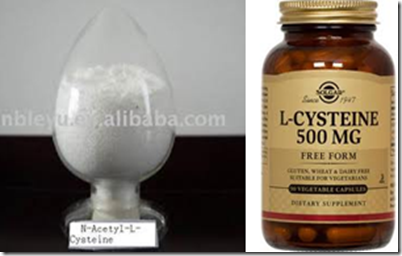

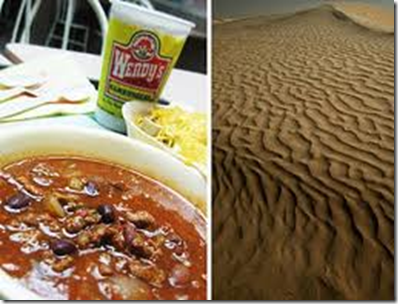
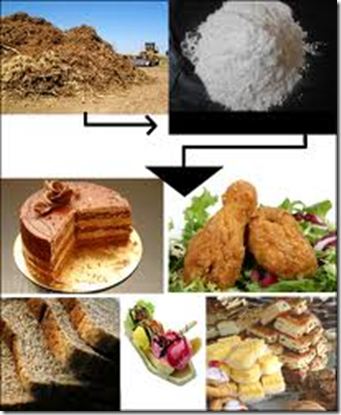
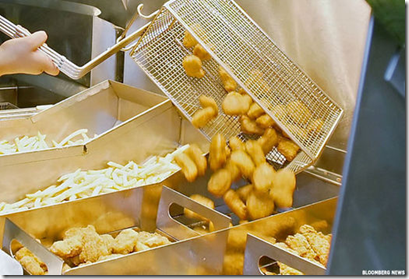
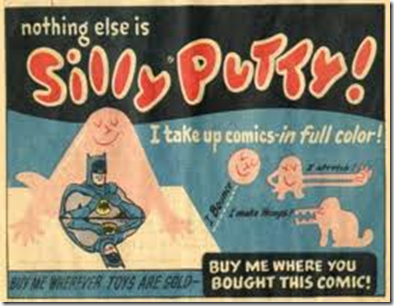
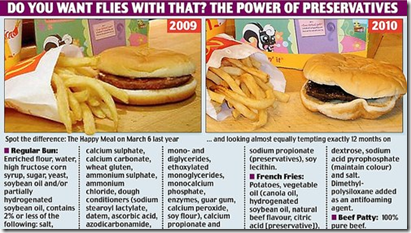


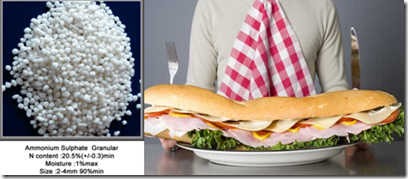
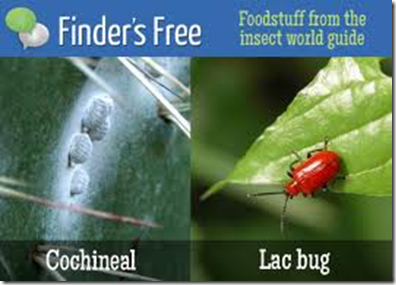
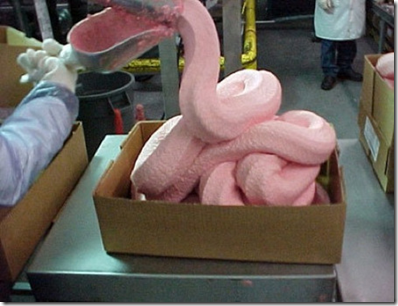

No comments:
Post a Comment
Please adhere to proper blog etiquette when posting your comments. This blog owner will exercise his absolution discretion in allowing or rejecting any comments that are deemed seditious, defamatory, libelous, racist, vulgar, insulting, and other remarks that exhibit similar characteristics. If you insist on using anonymous comments, please write your name or other IDs at the end of your message.